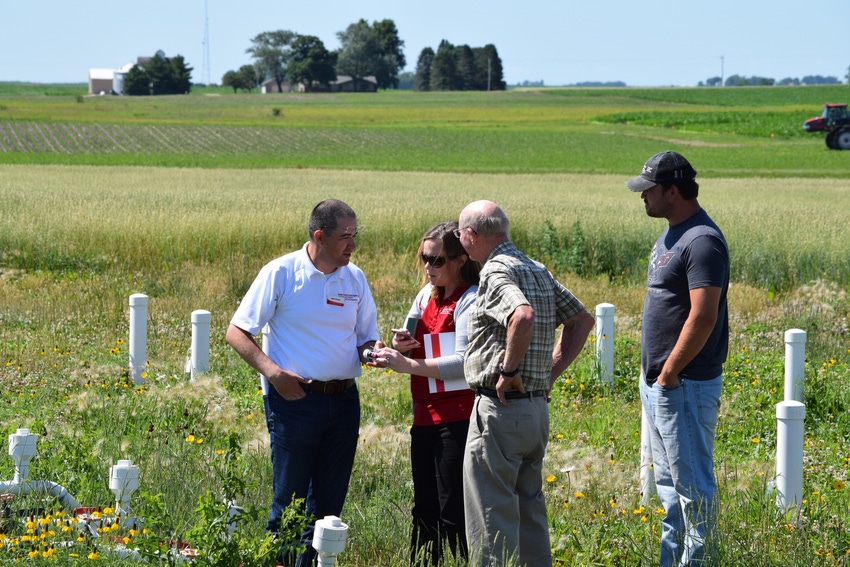
In late June, Iowa State University Extension and Outreach held a series of five “Nitrogen and Water Week” field days at water-quality research sites across the state. At the half-day programs, farmers and crop consultants learned about research related to profitable nitrogen management and ways to protect water quality.
Held at five ISU Research and Demonstration Farms, the field days helped attendees learn about evaluating nitrogen loss, and the effects of fall nitrogen application, cover crops and nitrification inhibitors. Attendees learned about the factors ISU uses to make nitrogen fertilizer recommendations, how to recognize nitrogen deficiency in corn and how to correct it. They learned how the online N Rate Calculator can be used by farmers to help them be more profitable while minimizing the impact on water quality.
Participants also left with a better understanding of the edge-of-field practices ISU is evaluating to help farmers decide which practices to use on their farms.
Research-based recommendations
There were four 30-minute sessions discussing how a water-quality research site works, practices being studied, how effective various management practices are in reducing nitrogen loss, and the impact of those practices on farm profitability.
The recommendations ISU makes on water quality practices for Iowa’s Nutrient Reduction Strategy are based on research and water monitoring going back as far as the 1970s and continues today, says Jamie Benning, manager of ISU’s Water Quality Program. Research is expensive, but essential in verifying the performance of various practices and informing both farmers and the public.
“Our goal is to help farmers manage nitrogen and other nutrients for improved profitability and improved water quality,” says Benning. That includes helping meet Iowa’s Nutrient Reduction Strategy goal of a 41% reduction in nonpoint source nitrogen loading in streams and rivers.
Which practices work best?
This research is key to helping farmers choose which practices are most effective economically and environmentally. In discussions among farmers, crop advisers and the public, there is a lot of emphasis on how much nitrogen to apply, when to apply it and which form to use. Those in-field N management practices are important factors. “But they don’t produce the big numbers in reduction of nitrates leaving the farm,” says ISU Extension field agronomist Mark Johnson.
Application rates, timing and source of N provide only 4% to 10% reduction of nitrate-N in water for the most part, he points out. The big reduction numbers come with cover crops, living mulches and edge-of-field practices like wetlands, drainage water management, bioreactors and saturated buffers.
Another point: “Don’t base your nitrogen application rates on expected yield. That’s no more than a wild guess,” says Johnson. Farmers who are overapplying N should use ISU’s corn nitrogen rate calculator to reduce rates to the maximum-return-to-N rates (MRTN). He says the use of nitrapyrin (Instinct, N-Serve) in the spring shows no yield or water quality benefit. And rye cover crops have the biggest impact in reducing in-field nitrate-N loss to water.
Iowa needs more cover crops
“My biggest disappointment,” says Johnson, “is the low adoption rate for cover crops.” He also notes the huge benefits that can come from putting 10% of a field, such as a field’s most environmentally sensitive acres, into prairie strips.
At the field day near Boone in central Iowa, ISU Extension ag engineer Matt Helmers and Benning demonstrated the use of a nitrate testing kit called retaiN, to test nitrate in tile line water. You can use it to help estimate the amount of nitrate lost through tile lines on your farm. More on how to conduct the test, read the results and use the information you gather is available at retainiowa.org. “This is another helpful tool to assist you in choosing and using practices that retain N for your crop,” says Benning.
Bottom line: There is no single strategy to effectively reduce nitrate loss. Each farm requires different combinations of nitrate reduction practices to reach the goals set forth in the Iowa Nutrient Reduction Strategy.
About the Author(s)
You May Also Like




